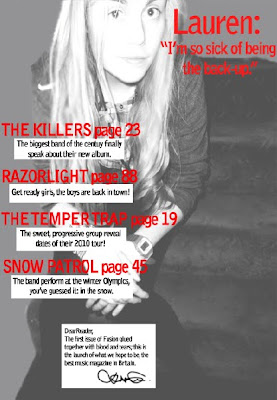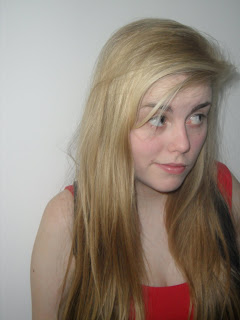
How I will improve my cover:
- Feather and brush the uneven surfaces to give it a 'glossy' magazine look
- Fix the person's leg; it is cut off and looks unprofessional
- Fill in the blank space underneath 'Razorlight' .
This is the draft contents page for my magazine:

How I will improve my contents page:
- Add some images to accompany the feature article contents
- Add a page number to direct to the main 'Lauren' article.
- Include access to other factions of the magazine, i.e. 'upcoming events'
















